This post may contain affiliate links.
Imagine this scenario: You’ve just picked up your new RV! Woo Hoo! Your walkthrough at the dealer went well, and everything checked out. Excited for your first trip, you hit the road and land at your first campsite – a remote state park with no hookups. It’s a bit hot when you arrive, so you turn on the air conditioner, and…
Nothing. The A/C doesn’t come on. The whole family is looking at you. As sweat pours down your face, you’re asking yourself all sorts of questions: Did you break it? Did you leave some important part back at the dealer? Are you just doing it wrong?
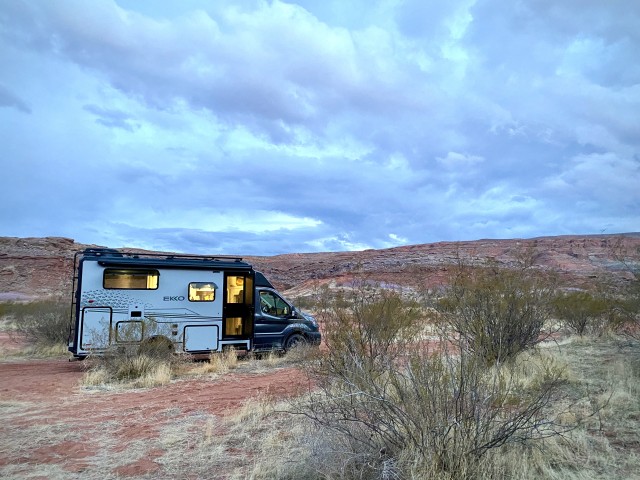
The answer to all those questions is, most likely, no. The key here to figuring out why the A/C isn’t coming on begins with knowing a few basic things:
a) there are two separate electrical systems in your RV;
b) different devices run on each of the two systems;
c) both systems don’t always necessarily work at the same time.
In this post, I’m going to walk you through both electrical systems in your RV, the 12 volt DC system and the 120 volt AC system. Or if you’d prefer, I’ve also got a video tutorial on this same topic you can find HERE. However you decide to learn this information, understanding the two electrical systems is an important concept for RVers to grasp. So let’s dive in.
The 12 volt system:
Your RV’s 12 volt system is electrically similar to what you might find in your car. It’s powered by your RV’s house battery (or battery bank). So, as long as you have battery power available, the 12 volt system will be at your disposal. This is why batteries are such a critical part of your RV.
Many basic components run on the 12 volt system. The exact appliances and devices will depend on your particular RV, but in general, the following components run on 12 volts:
- Lights – Be glad for this one! As long as you have a charge in your battery, you’ll have lights.
- Water Pump – When you’re not hooked up to city water, you’ll need your water pump to supply the pressure so your RV’s water can flow. So as long as you’ve got battery power while dry camping, you’ve got running water.
- USB Outlets – If you’re a compulsive phone charger, you can keep getting your fix while your battery has a charge.
- Fans – The 14 inch fan in your living area, the vent fan in your bathroom, and the fan over your cooktop are all 12 volt appliances.
- Power Awnings – If your rig is equipped with a powered awning, it will run off your RV’s 12 volt system.
- Furnace – Though your furnace likely burns fuel to produce heat, it requires electricity, in the form of a 12 volt fan, to move that warm air around your rig.
- Monitor Panel – Your tank level monitors, and the control panel run on your RV’s 12 volt system.
- Refrigerator – I saved this for last, because there are several options for powering an RV refrigerator. It’s safe to say that unless you have a purely residential refrigerator, at least some part of your RV’s refrigerator requires 12 volt power. It might be the light, the thermostat, a spark igniter, or just the control panel, but some part of that refrigerator will require 12 volt power.
Your RV’s battery is the heart of your 12 volt system.
Between the battery and the 12 volt loads, you’re going to find a fuse panel. This fuse panel is strictly for the 12 volt components. You’ll see a collection of automotive-style blade fuses, and they should be labeled to indicate what component they belong to, and what size fuse belongs in each.
There are a couple more devices that live in the 12 volt world, and if your RV is equipped with them, it pays to know how they fit in:
An Alternator (for motorhomes) – Motorhomes are typically built so that they will charge the house batteries while the engine is running. This happens with current from an alternator. It could be either surplus current from the main chassis alternator, or a dedicated second alternator focused on your house electrical needs. In either case, alternators produce 12 volt current.
Solar Power – If your RV is equipped with solar power, there will be solar panels and a solar charge controller. When the sun’s out, that solar charge controller produces 12 volt current to charge your RV’s batteries.
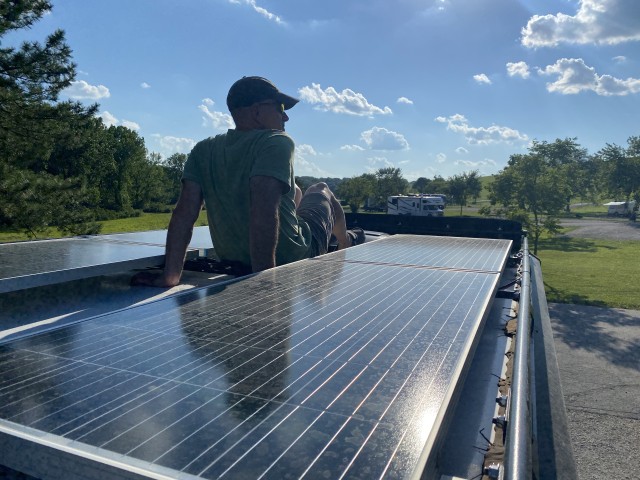
The 120 Volt System
The second electrical system in your RV is the 120 volt system. This is traditional household electrical current. This system doesn’t run from your batteries – at least not directly – so it’s not necessarily available all the time. For the 120 volt system to be active, you’ll need a source of 120 volt AC power. The two most common sources are:
1. Shore Power – When you plug your RV into a pedestal at an RV park or campground, you’re connecting a supply of 120 volt power. This can be either a 30 amp or 50 amp supply. Without getting deep into a discussion of electrical phases, let’s just say that 50 amp service for an RV means considerably more available power than 30 amp service.
2. Generator – If you have a generator, it will supply 120 volt power to your rig when it’s running. How much power it supplies depends on how many watts the generator is rated for. In round numbers, 3,600 watts is equivalent to 30 amp electrical service, and it would take 12,000 watts of power to equal 50 amp service.
Amps: What is that and why is it important?
The amperage (amps) of service determines the amount of power you have available to work with. Why does that matter? Because if you try to run more electrical devices than you have the amperage budget for, you’ll likely trip a breaker, which won’t harm anything, but will leave you wondering what happened for a moment.
A lot of the “big ticket” electrical items run on your 120 volt system:
- Air Conditioner – Depending on when and where you travel, your air conditioner just might be the most critical appliance in your RV. It runs on the 120 volt system. If you have 30 amps of 120 volt power available, you can run one air conditioner. If you have 50 amp service, you can run more than one air conditioner.
- Microwave – If your RV is equipped with a microwave, that’s a 120 volt appliance. You won’t even get the clock on it to turn on without 120 volt power. (And since 120 volt power in RVs stops and starts as you connect and disconnect, now you know why I never bother to set the clock on the microwave!)
- “Regular” Electrical Outlets – anything plugged into a household outlet in your RV relies on 120 volt power.
- Most televisions, DVD players, and Blu-Ray players – Today, these are often 120 volt devices, but in the past, 12 volt TVs were more common. There’s a way using an inverter (which we’ll get to in a minute) that may let you run a 120 volt TV, even without shore power.
- Refrigerators – If your rig has a true residential refrigerator, that’s a 120 volt appliance. If you have a 2 or 3-Way refrigerator that can run on AC power, then that option will require having 120 volt power.
Your RV’s 120 volt system works off breakers.
Whereas in the 12 volt system we have fuses to protect against dangerous conditions, in the 120 volt system, we have circuit breakers. The circuit breakers in your RV look and operate like the ones in your breaker box at home. It’s a good idea to know where this panel is before you need to. It’s frequently, but not always, co-located with the 12 volt fuse panel.
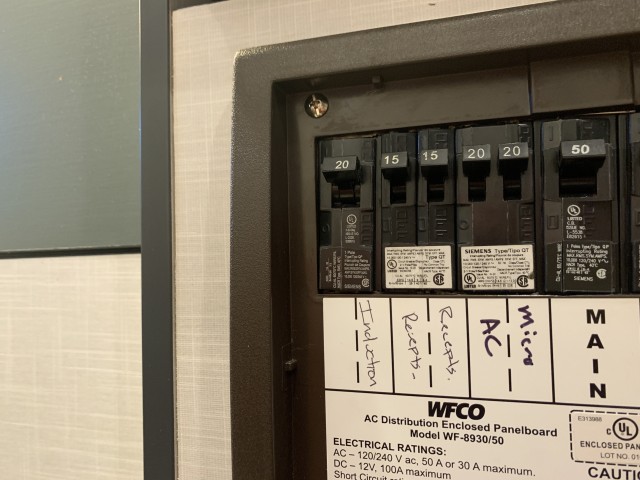
GFCI Outlets, a good-to-know tip:
GFCI outlets may be present in your 120 volt system as a protective device that will trip when they detect anything approaching a short. Depending on how your RV is wired, one GFCI might be protecting a whole string of outlets. So if you have an outlet that isn’t working, and the breakers are all fine, check your GFCI outlets and see if they need to be reset.
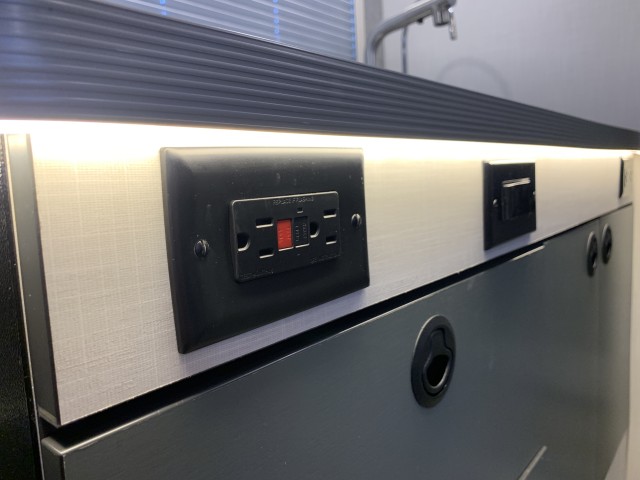
Devices that Bridge the Gap
The two electrical systems in your RV are connected by devices that can transform power from one system to the other. Depending on your RV’s configuration, it should have at least one of the following devices installed.
Converter – This is probably the most common. The converter takes 120 volt AC power and converts it to 12 volt DC power, which will power your 12 volt system and charge your RV’s battery. When you’re either plugged into shore power or running a generator, the converter is what’s charging your battery.
Inverter – An inverter is the opposite of a converter. An inverter will take 12 volt power from your battery and produce power for your RV’s 120 volt system. Inverters come in numerous types and sizes. A large inverter, properly installed, could be capable of powering your entire RV, assuming you had the battery capacity to do it. It’s also good to understand that inverters don’t have to be an all-or-nothing proposition. Many manufacturers now include smaller inverters of a few hundred to a thousand watts in their RVs. Inverters in this size range can power a few circuits which could, for example, keep a laptop charged, or run a 120 volt television and Blu-Ray player.
Inverter/Charger – These devices combine the functions of an inverter and a converter into one appliance. When 120 volt power is available from shore power or a generator, they will produce 12 volt power and charge your batteries. When there is no 120 volt power available, they can consume battery power and produce 120 volt power. This is the type of device we have installed in our own RV.
Putting It All Together
Now we’re finally back around to my opening scenario… a brand new RVer whose A/C won’t turn on while he’s dry camping. Knowing what you know now, how would you figure out this electrical issue if it happened to you?
To help you think about this the right way, I’ve put together the following chart, which walks you through some basic troubleshooting steps for an electrical issue. It certainly won’t cover every possible scenario, nor will it cover more complex electrical systems. But it should be enough to either guide you to a quick solution, or inform you that you’re going to need to seek backup.
So! Hopefully I’ve helped make the two separate electrical systems a little less confusing. You now should have a better idea what runs on each system. Plus you know what powers each system. And! You know that both systems are protected by either a fuse (for the 12 volt) or a breaker (for the 120 volt). While we always hope every RV trip will go off without a hitch, having this basic understanding is going to become especially invaluable if you ever do find yourself puzzling over an electrical glitch while you’re on the road. And if an electrical problem does happen, and you end up solving it because you educated yourself ahead of time, that right there is a moment of winning at life.

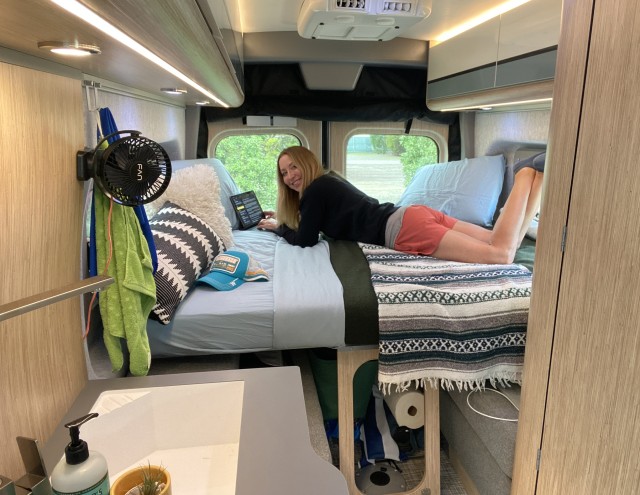
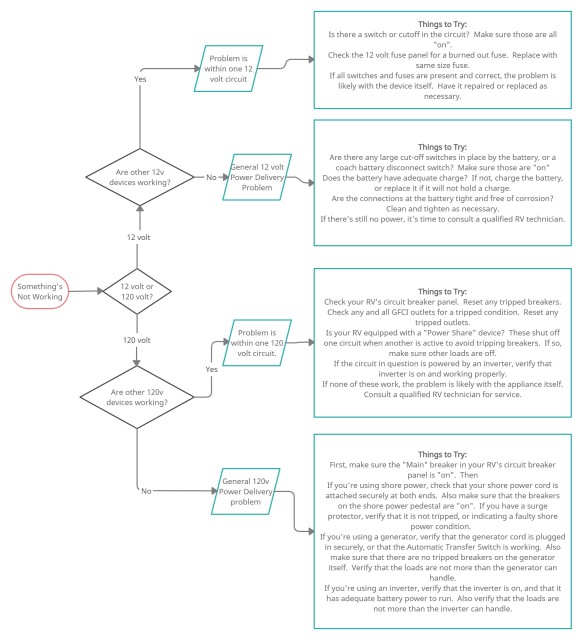




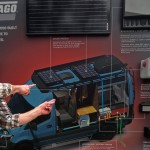





I have only had one RV and we took a 20-month trip across the country with it. The whole time I kept hearing about batteries, generator, inverter, shore power, and I only had a vague understanding of why we needed all these everything options. This finally explained it all to me! Thank you.
Glad you found it helpful!!